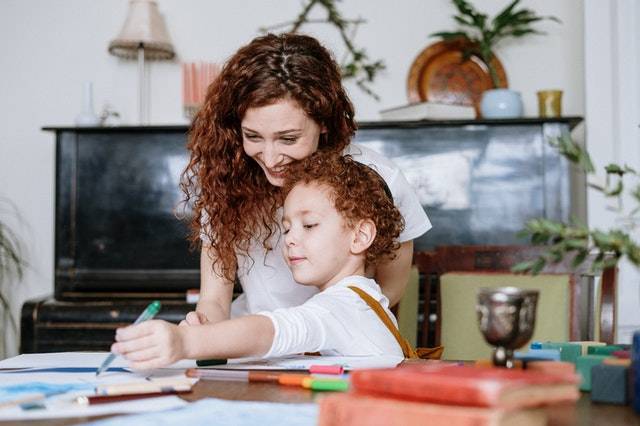5 Ingenious Ways A Paper And Pencil Can Develop Your Kid’s Creativity

During the toddler years, your child may begin to become curious about things. As such, they’d want to hold things such as toys and clothes. By the age of three, they may begin to pick up a pencil or crayon and start scribbling on walls or any surface they can find. As frustrating as it can sometimes be to see your child doodling on your walls and furniture, it’s in this stage where they start feeling curious, stimulating their creativity. Instead of punishing them for it, you can redirect their inquisitive minds and encourage them to get creative by giving them paper and a pencil.
They may not recognize the purpose of papers and pencils right away, but giving them these tools may help develop their creativity. To help you understand further, here are five ingenious ways a paper and pencil can help build your kid’s creativity.
1. Develop Their Drawing And Writing Skills
The essential tools your child will need to learn how to draw or write are pencil and paper. Drawing allows your child to stimulate their imagination and channel their creativity. Each time they get to hold a pencil and paper, they can write down or draw anything that’s in their mind. What’s more, they can also get inspiration from the things they see every day and use them for their drawings. With a paper and pencil, they now have a safe space to draw without having to doodle on your walls and furniture.
2. Create A Sketchbook Journal
Using paper and pencil are also an effective way to express their thoughts and can be another form of communication. You see, some kids might not be confident or comfortable in expressing their thoughts and feelings through words or actions. So, the safest and most comfortable way for them to express these is through drawing or writing them down. They can create their very own sketchbook from the papers you provide and use this as their daily visual journal.
You can invest in a ready-made sketchbook and provide them with pencils and crayons. Make sure you go for a sturdy and eco-friendly sketchbook brand when shopping for your kid’s visual journal so they can keep on writing or drawing without worrying about tearing the paper.
Now, it’ll be easier for you to gain an insight into your child’s thoughts and feelings by going through the drawings from their sketchbook. And remember, the more your child can express their thoughts and feelings, the more it boosts their emotional intelligence.
3. Enhance Their Motor Skills
Whether your child is scribbling random shapes or writing random letters on paper, the use of paper and pencil can help improve their motor skills. So, it’s a good idea to start them young and introduce them to papers and pencils when they can finally grasp things. Introducing them to papers and pencils will help boost their eye and hand coordination and exercise their finger muscles. It’s also a good idea to guide them and introduce them to basic shapes and letters so they’ll have inspiration and a direction on what to write or draw.
4. Develop Problem-Solving Skills
As you give your child a pencil and paper, the first thing that comes to their minds may be ‘What should I write/draw?’ This simple question can challenge their minds and require them to analyze and solve problems. You can also provide them with guide questions like:
- What color would you use to shade that?
- Why did you draw a line on that part?
- Why did you color it red (or other colors)?
Try asking them these questions and listen to what reasoning and solutions they can come up with.
5. Prepare Them For School
The child’s very first teacher is no other than their parents. As a parent, it’s your responsibility to prepare your child before you enroll them in school. One way you can prepare them for school is by introducing them to paper and pencil. Teach them the main functions of these writing tools and how they can use these to express their creativity and imagination. You can also prepare them by teaching them how to write letters, shapes, and color them with their crayons.
Sooner or later, they’ll get used to the feeling of holding pencils and feel more confident in writing down anything. This simple introduction to the primary uses of paper and pencil will help them become more prepared and mentally ready once you enroll them in an actual school.
Takeaway
Introducing your child to pencils and papers can help develop your child’s creativity, motor skills, and problem-solving skills. So, as early as possible, you can begin introducing your child to these essential writing tools to keep their minds stimulated.

